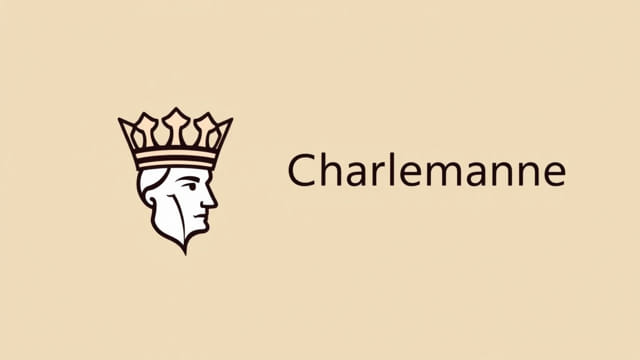Under Charlemagne The Carolingian Dynasty
The rise of the Carolingian Dynasty under Charlemagne marked one of the most transformative periods in European history. Charlemagne, also known as Charles the Great, expanded Frankish territories, unified much of Western and Central Europe, and laid the foundations for what would later be known as the Holy Roman Empire. His reign not only reshaped political structures but also encouraged cultural revival, economic reform, and religious consolidation. Through his leadership, the Carolingian dynasty reached the height of its power and influence during the early Middle Ages.
Origins of the Carolingian Dynasty
The Carolingian Dynasty originated from a noble Frankish family. The dynasty derived its name from Charles Martel, the grandfather of Charlemagne, who became famous for defeating Muslim forces at the Battle of Tours in 732. Martel’s son, Pepin the Short, succeeded in becoming king of the Franks and established a hereditary monarchy with the blessing of the Pope, thus linking the dynasty closely with the Church. When Pepin died, his kingdom was divided between his two sons, Carloman and Charlemagne. Upon Carloman’s death in 771, Charlemagne became the sole ruler.
Charlemagne’s Rise to Power
Charlemagne inherited a powerful kingdom, but his ambition and strategic prowess took it even further. He launched a series of military campaigns that dramatically expanded the Carolingian Empire. His conquests included the Lombard Kingdom in Italy, Saxony in modern-day Germany, and parts of present-day Austria, Spain, and the Low Countries. His military strength, combined with diplomatic skill and religious alliances, allowed him to consolidate a vast and diverse empire under his control.
The Coronation and the Holy Roman Empire
One of the most significant moments of Charlemagne’s reign came on Christmas Day in the year 800, when Pope Leo III crowned him ‘Emperor of the Romans’ at St. Peter’s Basilica in Rome. This event marked the revival of the Western Roman Empire and the birth of what would become known as the Holy Roman Empire. The coronation symbolized a powerful alliance between the Frankish kingdom and the Roman Catholic Church, reinforcing Charlemagne’s legitimacy and the divine right of kingship.
Political and Administrative Reforms
Under Charlemagne, the Carolingian Dynasty saw major administrative advancements. To effectively govern his vast empire, Charlemagne appointed local nobles known as counts to manage provinces. He also introduced the system ofmissi dominici, royal envoys who traveled throughout the realm to supervise the counts and ensure justice and order. This system improved communication between the central government and distant regions, promoting political cohesion.
Charlemagne’s court in Aachen (modern-day Germany) became a center of administration, learning, and diplomacy. He held regular assemblies, consulted with nobles and clergy, and issued a large number of legal decrees to standardize governance across the empire.
The Carolingian Renaissance
Charlemagne’s reign marked a revival of learning and culture known as the Carolingian Renaissance. Recognizing the importance of education, he invited scholars from across Europe to his court. One of the most notable figures was Alcuin of York, who played a key role in developing a new curriculum based on classical texts and Christian teachings.
Contributions to Education and Literacy
The Carolingian Renaissance resulted in several educational reforms:
- Establishment of monastic and cathedral schools to educate clergy and future administrators.
- Standardization of Latin, improving communication and recordkeeping.
- Development of the Carolingian minuscule, a clear and legible script that made texts easier to read and copy.
These efforts not only preserved ancient texts but also laid the groundwork for intellectual life in medieval Europe.
Religious Reforms and Relationship with the Church
Charlemagne viewed the Christian faith as a unifying force for his empire. He supported missionary work, especially in newly conquered territories like Saxony, where he sought to convert the population to Christianity. He also promoted the standardization of liturgical practices and strengthened ties with the papacy.
The king implemented reforms in the Church to ensure moral discipline and effective administration. He worked with bishops to organize synods and issued capitularies (royal decrees) that addressed both civil and ecclesiastical matters. These reforms elevated the role of the Church in daily life while reinforcing the authority of the monarchy.
Legacy of Charlemagne and the Carolingian Dynasty
Charlemagne’s death in 814 marked the end of an era, but his influence endured for centuries. He was succeeded by his son Louis the Pious, who struggled to maintain the unity of the empire. After Louis’s death, the Treaty of Verdun in 843 divided the Carolingian Empire among his grandsons, leading to the fragmentation of central authority.
Despite the decline of centralized power, the legacy of the Carolingian Dynasty remained significant:
- The idea of a unified Christian empire influenced later European rulers, particularly the Holy Roman Emperors.
- The administrative structures and legal reforms introduced by Charlemagne served as models for future governance.
- The educational and cultural revival initiated during the Carolingian Renaissance preserved classical knowledge and inspired future intellectual movements.
Charlemagne in Historical Memory
Charlemagne was revered during the Middle Ages and continues to be remembered as a foundational figure in European history. He became a symbol of Christian kingship and a model for rulers aspiring to unify and elevate their realms. In many ways, Charlemagne’s reign under the Carolingian Dynasty laid the roots for the political, cultural, and religious landscape of medieval Europe.
The period under Charlemagne’s rule represents the pinnacle of the Carolingian Dynasty’s power and legacy. Through military conquest, administrative innovation, cultural revival, and religious reform, Charlemagne transformed a regional kingdom into a vast empire with lasting influence. His reign redefined European leadership and planted the seeds of future institutions that would shape the Western world for centuries. The Carolingian Dynasty, under his guidance, not only unified diverse peoples but also reignited the intellectual and spiritual spirit of a continent.
